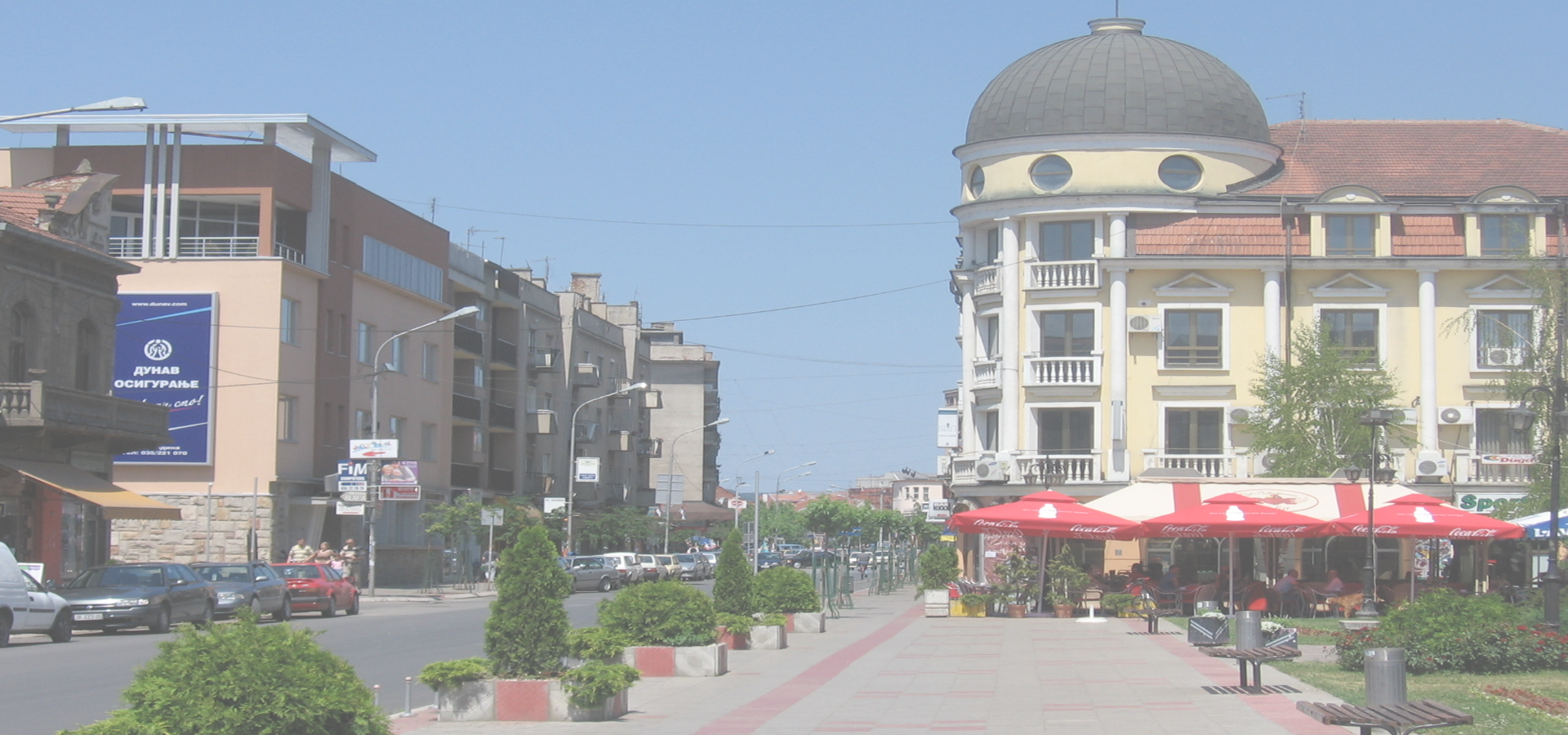Ćuprija, Pomoravlje District, Šumadija and Western Serbia Region, Serbia
🇷🇸 Ćuprija (Ћуприја) is a town and municipality located in the Pomoravlje District of central Serbia.
History The Romans founded the town as a fort Horreum Margi (Horreum: Granary, Margi: Morava) on the road from Constantinople to Rome, where it crosses the river now known as Velika Morava. It served as a Roman military base, had a shield factory and gained the status of municipium before AD 224. In 505, the Romans were defeated by Goths and Huns under Mundo, a descendant of Attila the Hun.
Under Slavic rule, it became known as Ravno (literal translation to English would be "flat"), since it is in a flat river valley. Some local names (of the villages Paljane and Isakovo, of the river Mirosava) recall the major clash in autumn 1191 between the Serbs (under Stefan Nemanja) and the Byzantines (under Emperor Isaac II Angelos).
In the 15th century, Ćuprija became part of Ottoman Empire. After conquering this settlement, the Turks built a bridge or "köprü" in Turkish – hence the name of the town. Shortly after the First Serbian Uprising began, in 1805 one of the first and most important battles was won by Ivankovac, near Ćuprija. Serbian uprisers under the leadership of dukes Milenko Stojković, Petar Dobrnjac, and Stevan Sinđelić defeated a Turkish army which led to further spreading of the Uprising through all of Belgrade Pashaluk. Four years after that, in 1809, Ćuprija Elementary school was founded.
During the Second Serbian Uprising, Serbian prince Miloš Obrenović made an oral agreement in Ćuprija which enabled Serbs in Belgrade Pashaluk to collect their own taxes, to participate in proceedings against Serbs and to establish a National Office composed of Serbian princes. After 1834, the town started to grow economically and eventually merged with the nearby villages of Mućava, Mrčajevci, and Žirovnica. In the Ottoman era, Ćuprija was the town of Smederevo with the highest concentration of Albanians. Contemporary Serb author Joakim Vujić recorded more "Turkish Arnauts than Serbs" in 1826 in the town. After the war, Obrenović began a campaign to buy out all Muslim Albanian households in the town. In 1853, "Dobričevo" farm was founded. This led to the establishment of the Agricultural school in 1899. In 1911, a Sugar factory called "ŠELK 911" was founded.
During the 19th century, Ćuprija was the centre of Nahiyah. After 1890, it was the seat of Morvaski okrug (Morava County).
From 1929 to 1941, Ćuprija was part of the Morava Banovina of the Kingdom of Yugoslavia.
In World War Two, a special Ćuprija-Paraćin partisan troop was formed in order to fight against the German Wehrmacht. On September 26, 1941, 35 members of this troop were shot by German occupiers. The Second World War finally ended in Ćuprija on October 13, 1944, when town was liberated from the Wehrmacht during the so-called Belgrade Operation.
During the NATO bombing of Yugoslavia in 1999, the town's centre was heavily damaged. Some buildings still remain in ruins. As of 2011 census, the municipality has 30,645 inhabitants.
Settlements Aside from the town of Ćuprija, the municipality includes the following 16 settlements: • Batinac • Bigrenica • Dobričevo • Dvorica • Isakovo • Ivankovac • Jovac • Kovanica • Krušar • Mijatovac • Ostrikovac • Paljane • Senje • Supska • Virine • Vlaška.
Sport Sport activities in Ćuprija are developed. Thanks to many athletes and coaches (such as Vera Nikolić, Dragan Zdravković, Snežana Jolović-Pajkić, Zora Antić -Tomecić, Miroslav Pavlović, Vladan Đorđević, Dušan Košutić, Vlada Jovanović, Ljiljana Šušnjar and Aleksandar Petrović etc.) Ćuprija was well known as "the Athletics town". Beside athletic, soccer (football in Europe), basketball, handball, tennis and volleyball are extremely popular sports in Ćuprija.
Ćuprija's football club "Morava" was founded in 1918 and is currently competing in Pomoravsko-Timočka football zone. It has its own stadium with a capacity of 10,000 sport fans. In Ćuprija, there could be found a dance club for those who love to dance.
Features Ćuprija lies on international road and railway links 150 km (93 miles) south of Belgrade and 90 km (56 mi) north of Niš. The main source of income is the College of Nursing and Agriculture. Ravanica Monastery, built in 1381 by Lazar of Serbia, is 8 km (5 mi) to the east.
Europe/Belgrade/Pomoravlje

Ćuprija has a population of over 19,380 people. Ćuprija also forms part of the wider Pomoravlje District which has a population of over 214,536 people. Ćuprija is situated near Jagodina.
Twin Towns, Sister Cities Ćuprija has links with:
🇸🇮 Celje, Slovenia 🇧🇦 Doboj, Bosnia and Herzegovina 🇧🇦 Gradiška, Bosnia and Herzegovina🇷🇴 Alexandria 43.983
🇷🇺 Kislovodsk 43.911
🇨🇦 Bowmanville 43.9
🇨🇦 Orangeville 43.9
🇫🇷 Mont-de-Marsan 43.894
🇵🇱 Ostrowiec Świętokrzyski 21.387
🇬🇷 Missolonghi 21.417
🇬🇷 Messolonghi 21.417
🇲🇰 Kisela Voda 21.441
Locations Near: Ćuprija 21.3667,43.9333
🇷🇸 Jagodina 21.257,43.981 d: 10.2
🇷🇸 Kruševac 21.317,43.567 d: 41
🇷🇸 Kragujevac 20.927,44.013 d: 36.3
🇷🇸 Požarevac 21.183,44.617 d: 77.4
🇷🇸 Kraljevo 20.683,43.722 d: 59.6
🇷🇸 Prokuplje 21.583,43.233 d: 79.8
🇷🇸 Mladenovac 20.7,44.433 d: 76.9
Antipodal to: Ćuprija -158.633,-43.933
🇵🇫 Papeete -149.566,-17.537 d: 16959.3
🇹🇴 Nuku'alofa -175.216,-21.136 d: 17054.3
🇦🇸 Pago Pago -170.701,-14.279 d: 16524.2
🇼🇸 Apia -171.76,-13.833 d: 16442.8
🇺🇸 Hilo -155.089,19.725 d: 12927.4
🇺🇸 Maui -156.446,20.72 d: 12822.5
🇺🇸 Maui County -156.617,20.868 d: 12806.6
🇺🇸 Kahului -156.466,20.891 d: 12803.5